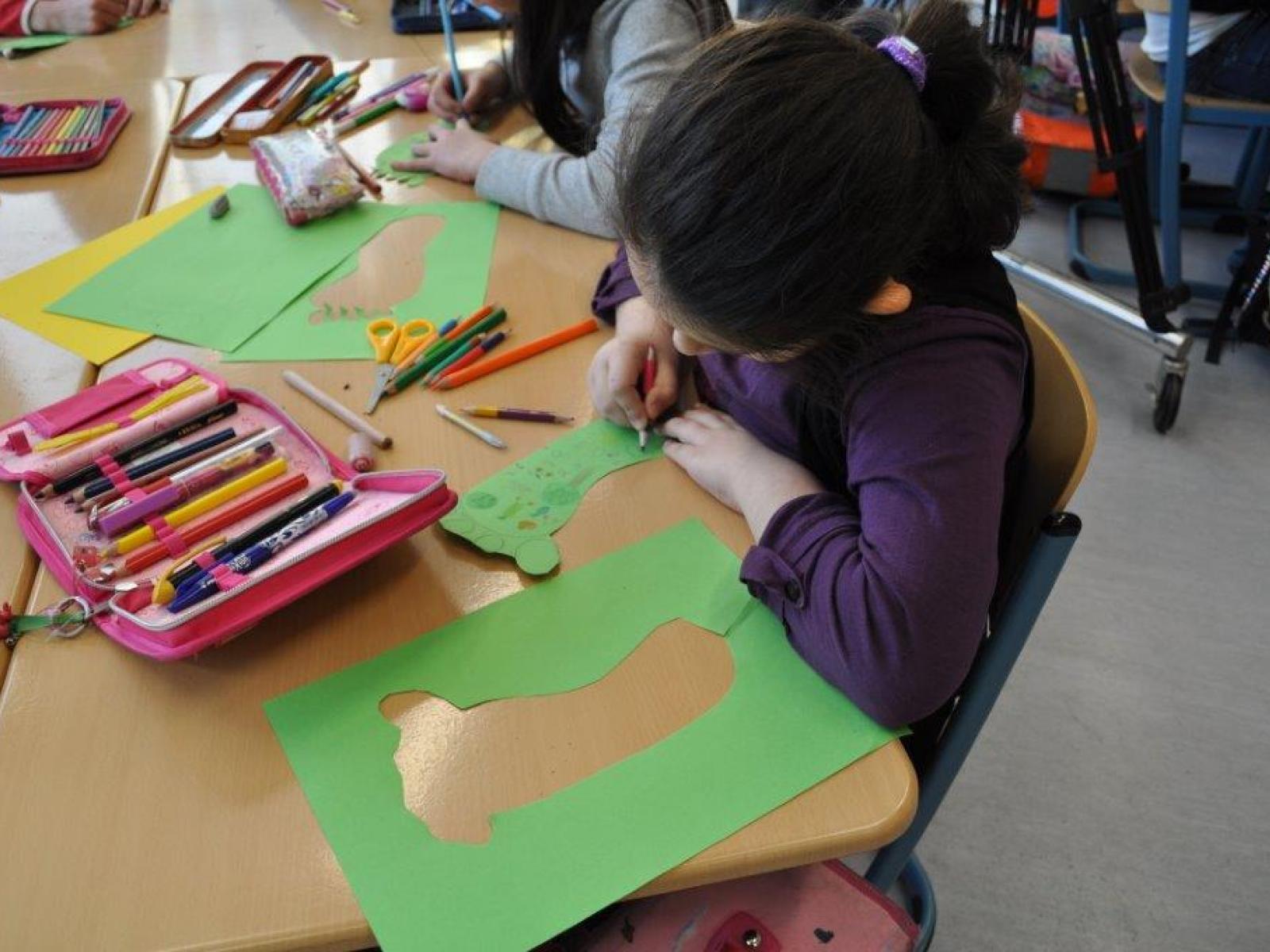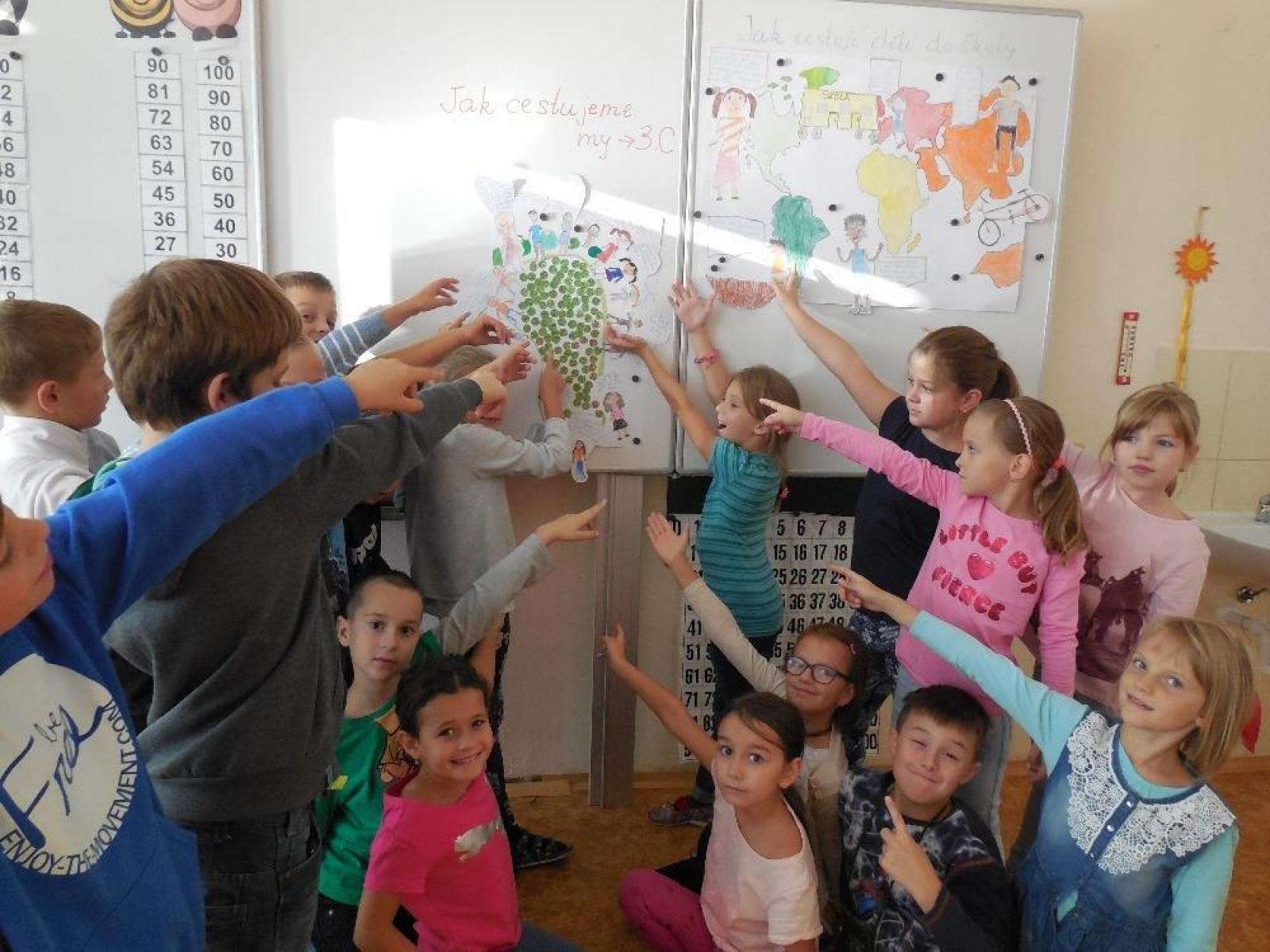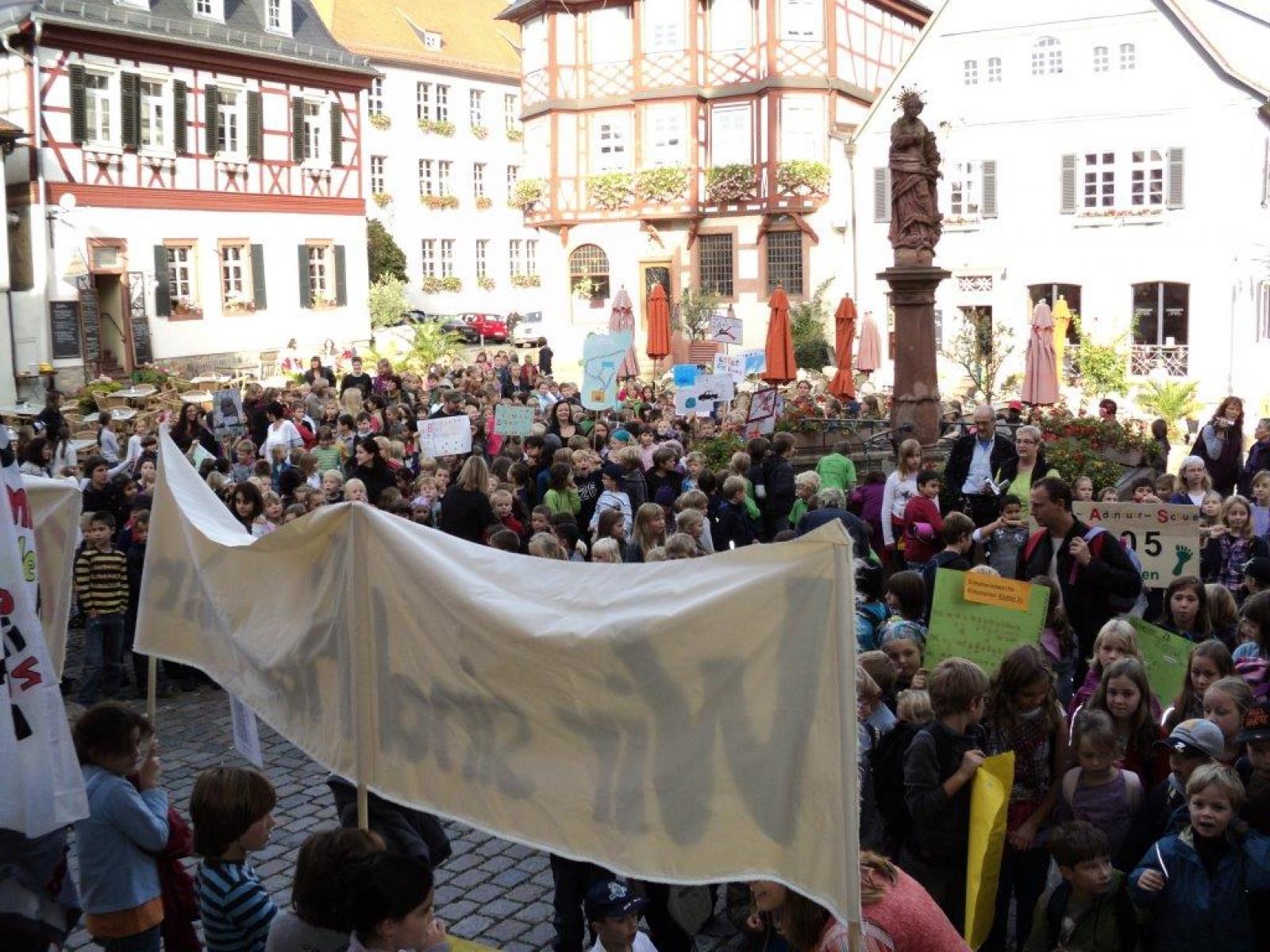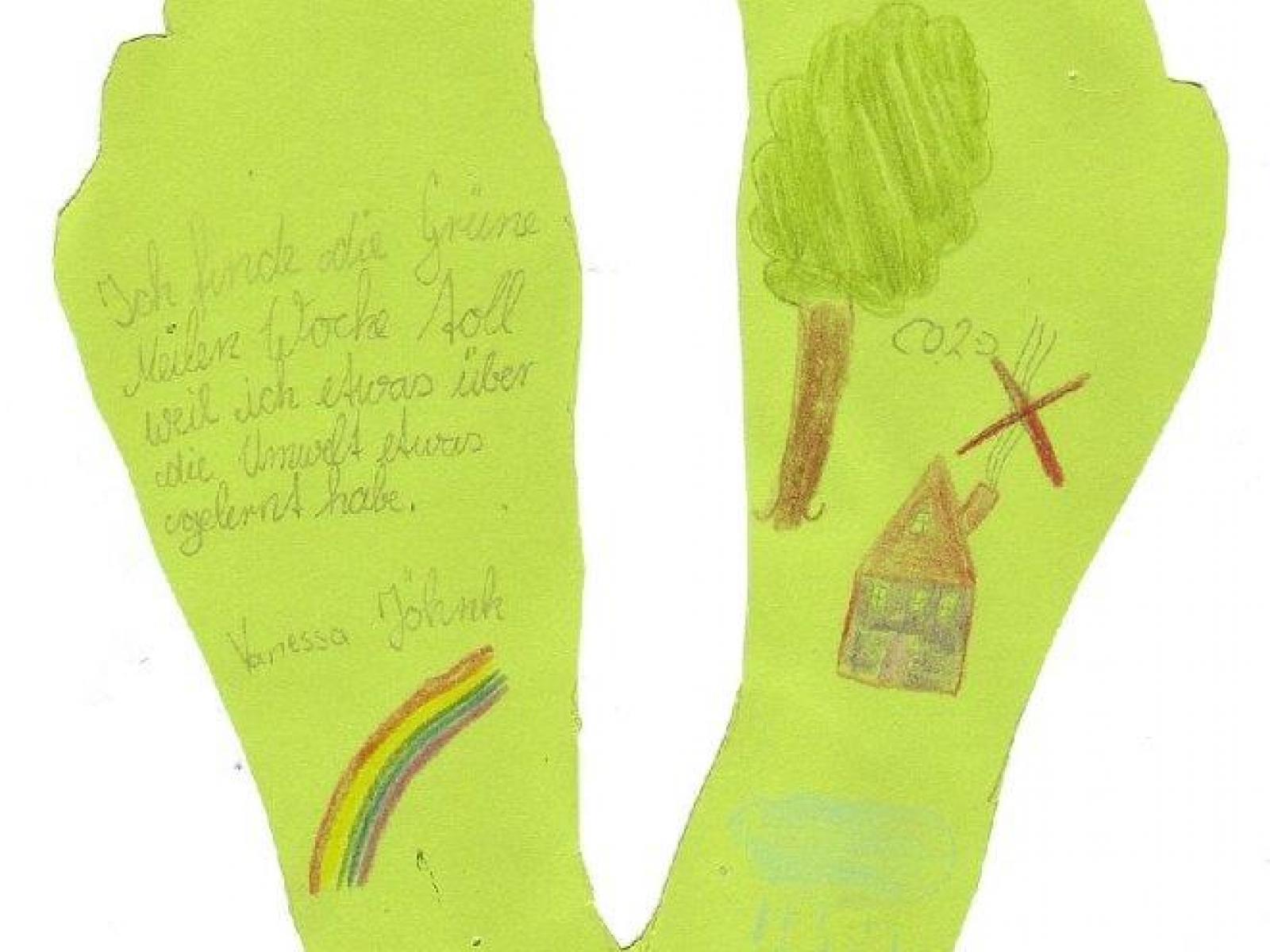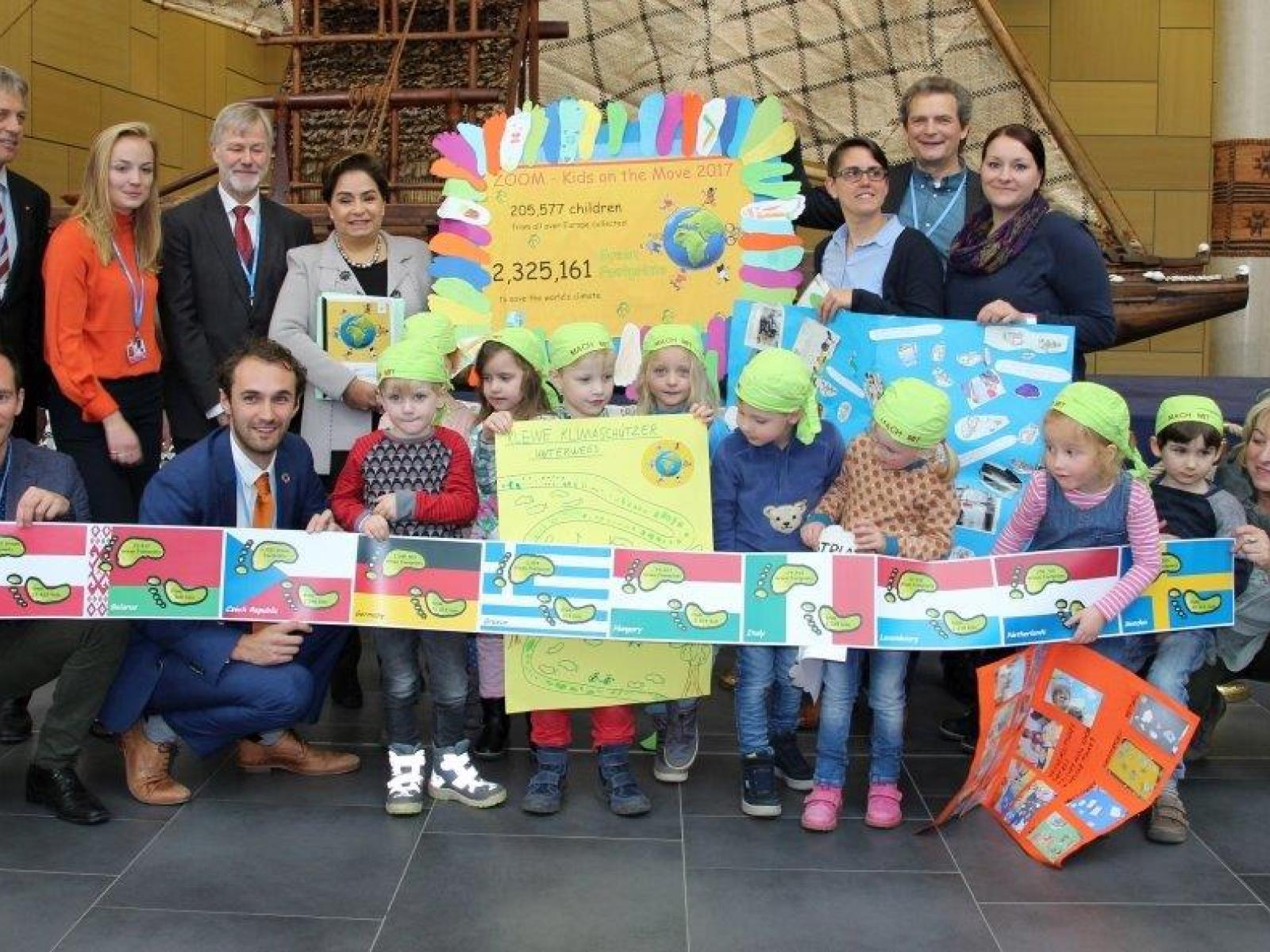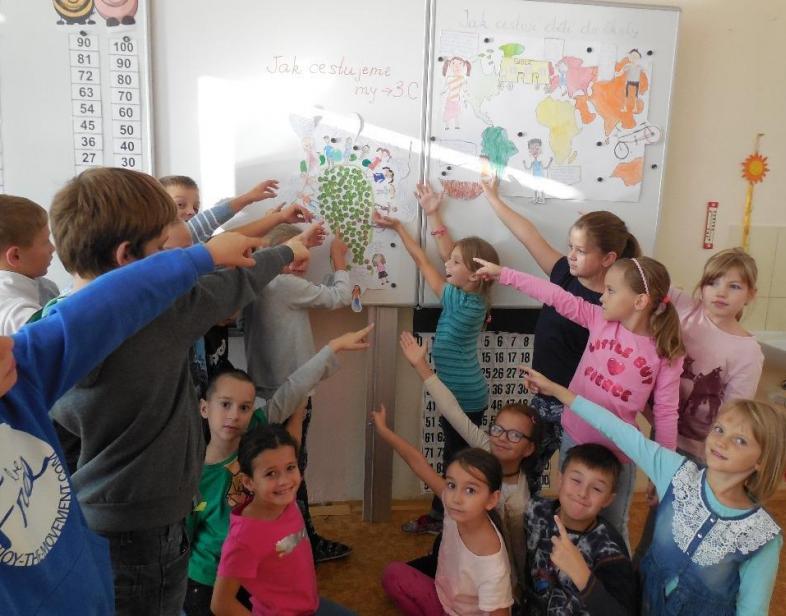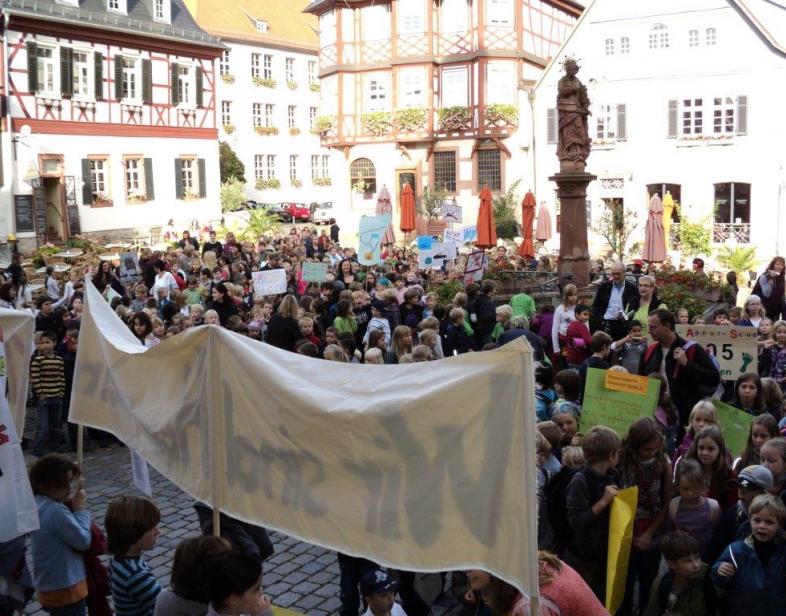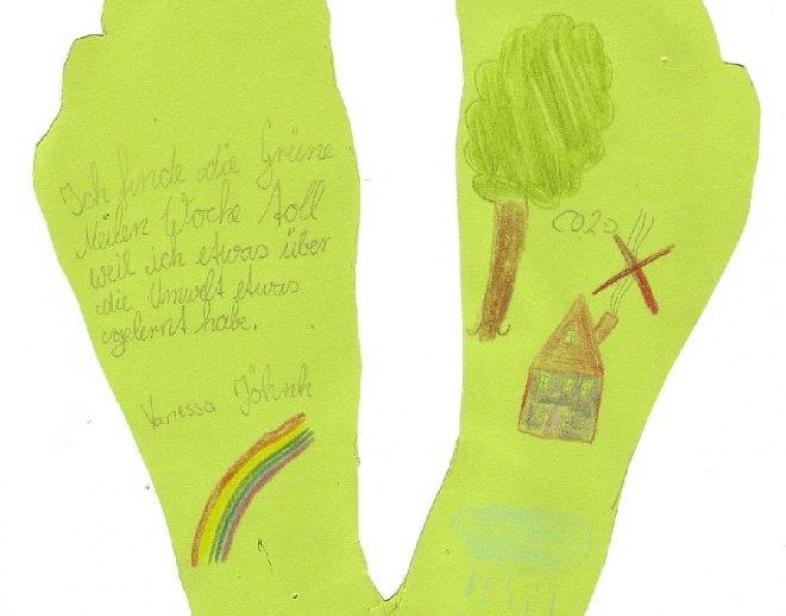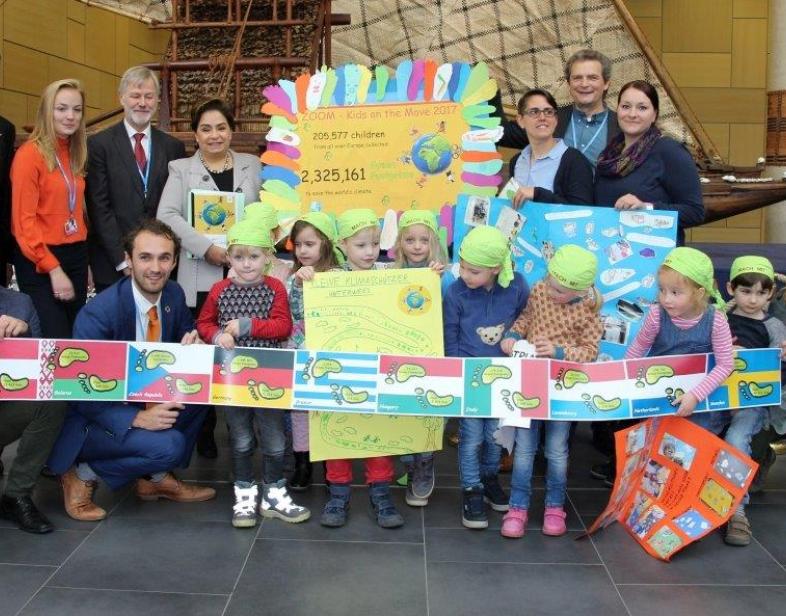An Overview Of Our Solution
Green Footprints helps children across Europe get an early start as climate protectors, inviting them to act together for a common goal. Participating kindergartens, schools or sports clubs each choose their own climate action week or weeks. During this period, each trip covered in a climate-friendly manner, whether on foot, by scooter or bike, by bus or by train, counts as one green footprint. Collecting green footprints gets children to think about climate change and to directly make a contribution to the fight against it in a playful way. Each year, Climate Alliance hands over the footprints collected to politicians at the UN Climate Summit. There they show how they are taking action on the climate while the grownups are busy negotiating. It was developed according to the principles of Education for Sustainable Development in 2002 and has run every year since.
- Population Impacted: Around 180,000 children plus teachers/families
- Continent: Europe
Context Analysis
Bringing children to school is viewed as a loving act, which has arguably been made even more convenient with the advent of the private car. Car use is on the rise in most countries, increasingly displacing other, more sustainable modes of transport such as going by foot, bicycle or public transport. This trend helps to
cement unsustainable habits and travel norms quite early in children’s’ lives and directly leads to increased CO2 emissions. In 2015, 22% of the EU’s total emissions were caused by traffic & transportation, of which around 44.5% were car-related. In Germany, urban traffic causes 25% of all traffic-related the CO2 emissions. An estimated 7.5 million tons of CO2 could be saved in Germany alone if only about 30% of distances up to six kilometers were cycled or walked instead of driven by car. By getting children to get their parents to change their transport behaviors, we can both save emissions and instill good habits for future generations.
Describe the technical solution you wanted the target audience to adopt
The Green Footprints campaign works to increase the uptake of sustainable mobility choices such as walking, biking and use of public transport in lieu of the private car amongst children, their teachers and their parents. The campaign also raises awareness on sustainability issues close to children’s everyday lives such as climate-friendly food, saving energy and the fair and climate-smart procurement of art and school supplies.
Type of intervention
Describe your behavioral intervention
The campaign changes social norms surrounding transport for children between the ages of three and 12, and by extension for their facilities and families. Entire classes are encouraged to collect as many green footprints as possible, with one footprint being awarded for every sustainable kilometer traveled by foot, bike, scooter or public transport. The campaign comes with ideas for lesson plans on sustainable mobility so that their learning is reinforced with real action. Green Footprints turns sustainable mobility into both a game as well as a group effort. As children of this age are largely dependent on their parents’ choices, there is the added effect of children nudging their parents to choose more sustainable modes of transport (mom, I don’t want to go to school by car!).
The campaign’s success in sustainably changing behaviors can be seen by facilities’ readiness to participate yearly (many institutions have been running the campaign for ten years or more) as well as its annual growth. Testimonials show that the effects are can be lasting, as is often the case when children call adult habits into question. In the words of one parent, “I didn’t know my daughter knew our neighbourhood so well. Now I feel okay about letting her go to school alone.” The campaign directly helps to change social norms amongst children and their families while reframing sustainable mobility as desirable and even cool.
As needed, please explain the type of intervention in more detail
Green Footprints also gets children politically involved, many for the first time, by encouraging them to make demands of politicians and other decision makers on climate at the annual Climate Summits of the UNFCCC. Each year, participating classes also write down their thoughts on how adults and politicians can curb climate change and each year, their efforts are personally recognized by the executive secretary of the UNFCC in a special ceremony. It is empowering for the children to see the results of their work and see that they can be role models for adults. The campaign also helps local politicians increase visibility for climate action – this is an important effect as municipalities can then show how they are making a difference.
Describe your implementation
Through creative lesson plans and the act of collecting green footprints as well as the exercise of learning about the international climate process and making demands of politicians, the Green Footprints changes social norms and empowers children to act as role models for sustainable mobility. This is a powerful tool for the promotion of behavioral changes in adults as well, and while the campaign does not directly measure behavioral change beyond the action weeks, testimonials show that its success is often lasting.
The campaign’s gamification approach has no doubt been its main success factor as has its ready-made modules that provide ideas for lesson plans – an important resource for teachers with tight budgets (time and money). Green Footprints makes for an effective, fun and easy to implement campaign. The immense positive feedback we receive from schools and kindergartens is proof enough that this is worthwhile. In the words of one teacher, “Onward with the effective and sustainable action!”
Reaching potential participants has been challenging and so we try to work with a variety of external partners. The largest obstacle has been the cost of materials though, including those of development and revision. Where possible, municipalities cover costs of the printed materials. Climate Alliance’s continued support of it despite little to no funding has, however, been a major enabling factor.
External connections
Key partners on an international level include the Climate Alliance national coordination offices in Germany, Hungary, Luxembourg, Austria and Italy as well as NGOs, energy agencies and other stakeholders across Europe and beyond.
Further key partners on the national level include federal and state ministries, which help with financial support in some countries, as well as NGOs working on mobility and environmental and development issues, which promote the campaign.
On the local level, the main partners include the municipalities as contact point for schools and kindergartens as well as local politicians who support the campaign and are responsible for concrete decision-making in local policy.
A major point for the long-term success of the campaign are good connections on UN level. It is very important to the children as well their teachers to know that their concerns and ideas are heard and recognized each year not only by their mayor but also by the UN Climate Secretary.
Who adopted the desired behaviors and to what degree?
The campaign has existed since 2002 and grown strongly over the years. In the first year, some 30,000 children in Germany collected 141,472 green footprints. In 2017, more than 205,000 children in over 1,400 schools and kindergartens from 10 European countries collected over 2.3 million green footprints. Last year in Germany alone, more than 75,000 children in 160 municipalities participated. All told, some 2.1 million children in over 30 countries have collected almost 27 million green footprints over the last 15 years! These numbers come with heartening feedback that even after the end of the activity week(s), parents continue taking their children to school by foot. They report that they kids not only enjoy it but that they also enjoy getting to know another side of their kids.
An overview of all campaign seasons since 2002 as well as many examples for local Green Footprints action can be found on www.zoom-kidsforclimate.eu/results
How did you impact natural resource use and greenhouse gas emissions?
One could try to reduce the Green Footprints campaign down to CO2 savings per collected footprint or other more or less sensible metrics, but that would be missing the point. The campaign is primarily about raising awareness and not about hard facts on emissions, which are difficult for children to grasp. In this way, we deliberately avoid mesurement methodolgies. We find it much more useful to give those involved concrete and understandable examples. Why do we need so much extra space for parking lots in cities? Why does it make sense to buy the local apple juice instead of the imported orange juice? The main aim is to sharpen children’s view on a variety of big picture aspects and to create an inclusive culture through joint action. This helps to ensure that climate protection does not remain an abstract thought or a series of numbers. It cements it as a daily normality that goes far beyond a certain amount of CO2 savings.
What were some of the resulting co-benefits?
The Green Footprints campaign promotes a big picture perspective, showing that climate action goes hand in hand with health, well-being, empowerment and fun. Walking or biking to school promotes physical development and concentration in the classroom. Many teachers report that kids concentrate better and are better behaved after walking to school.
The campaign also allows empowering children. It gives them the opportunity to participate on a political level and have their voices heard. Kindergartens report that children are also typically quite eager to get their families to change their habits and that these efforts are both appreciated and recognized by their families and beyond.
The campaign helps improves children’s orientation and abstract thinking skills as they begin to more realistically judge risk at dangerous places in their communities. It also strengthens their sense of community, local knowledge and identification with the local environment.
Sustainability
The campaign is mainly funded by the minimal fees charged the campaign materials. The fee is kept low as budgets for educational materials are notoriously tight. On the national level, national and state ministries often partially support campaign work. Funding for the overall international coordination remains difficult and is typically covered by Climate Alliance. This means that funding is often lacking for things like much needed website updates.
On the local level, the costs for the campaign depend on how much effort a city wants to invest. We provide easily adaptable PR-materials and a ready-made concept for implementation on the local and school level. If necessary, establishments can even run the campaign without printed materials.
Return on investment
The Green Footprints campaign is an extremely low-cost and easy to run initiative that mobilizes thousands of children and teachers across Europe and beyond annually. This has surely been a significant success factor over the years.
It is difficult to get precise numbers as to costs and returns on investment. The campaign is funded differently in each country each year. Much voluntary work also goes on behind the scenes by dedicated teachers, NGOs and other partners. This is impossible to quantify.
The costs of updating, adapting and translating materials as well as the general international coordination (up to €20,000 a year for staff alone) are largely covered by Climate Alliance. For 2017, this equates to roughly €0.10 per child.
How could we successfully replicate this solution elsewhere?
Green Footprints has already been replicated in several European countries. Participation typically counts children from 10-15 countries each year. The children’s facilities and municipalities in these countries use the concept, scaling it, adding to it and adapting it as needed. Costs for translations and the graphic design of materials is very hard to come by, which is why many good materials and ideas have not yet been incorporated in other countries so far. Last year’s revision and redesign of the 60 page teaching guide as well as its translation and release in English cost some €7000, printing and other material costs not included. The website is in urgent need of an update as is the sticker album, as this cannot at the moment be printed without a professional printing service. Such changes would make the campaign even more accessible to more participants.
